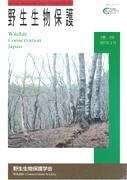Volume 2, Issue 4
Displaying 1-4 of 4 articles from this issue
- |<
- <
- 1
- >
- >|
Original Papers
-
Article type: Original Papers
1997 Volume 2 Issue 4 Pages 169-183
Published: 1997
Released on J-STAGE: September 29, 2017
Download PDF (1064K) -
Article type: Original Papers
1997 Volume 2 Issue 4 Pages 185-193
Published: 1997
Released on J-STAGE: September 29, 2017
Download PDF (809K) -
Article type: Original Papers
1997 Volume 2 Issue 4 Pages 195-204
Published: 1997
Released on J-STAGE: September 29, 2017
Download PDF (912K) -
Article type: Original Papers
1997 Volume 2 Issue 4 Pages 205-212
Published: 1997
Released on J-STAGE: September 29, 2017
Download PDF (573K)
- |<
- <
- 1
- >
- >|
